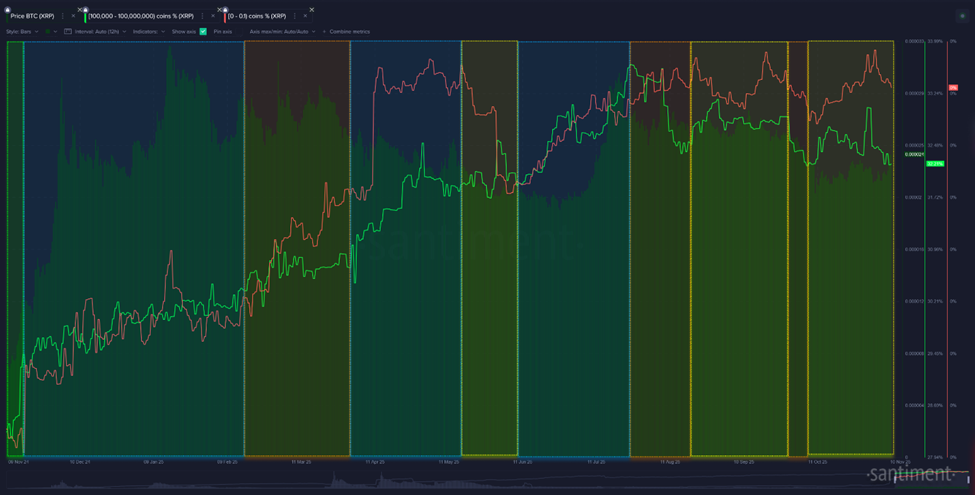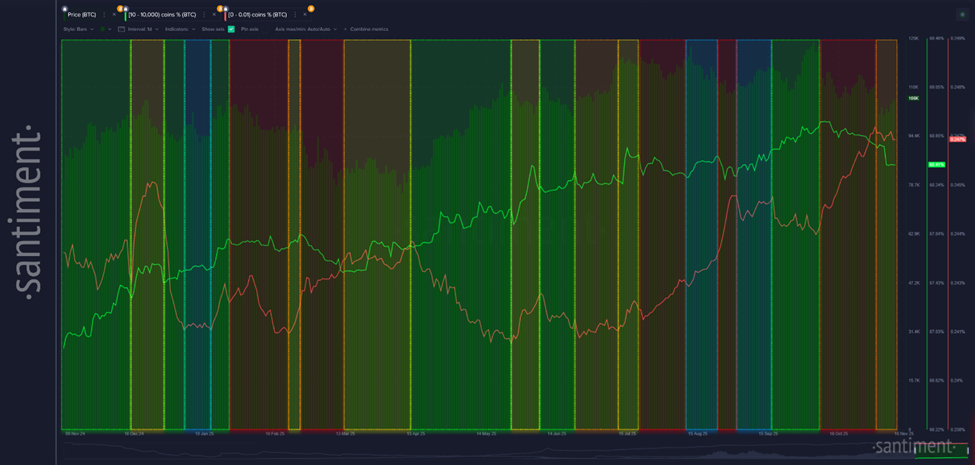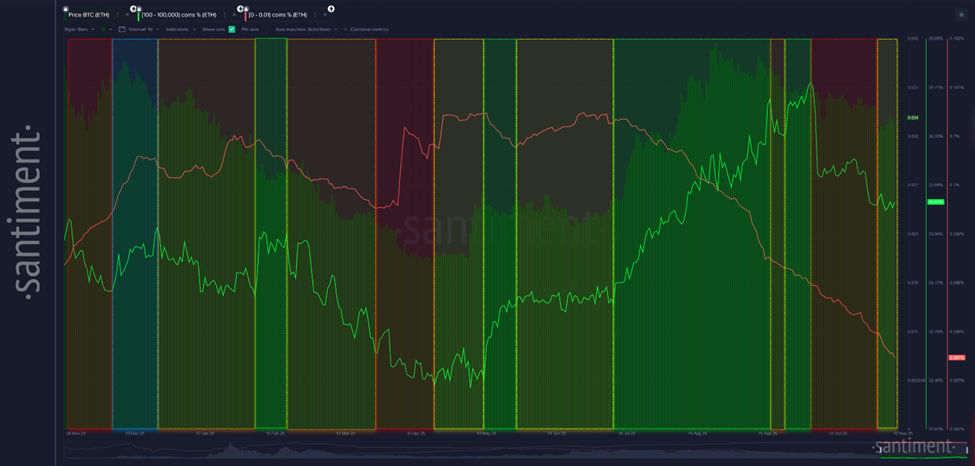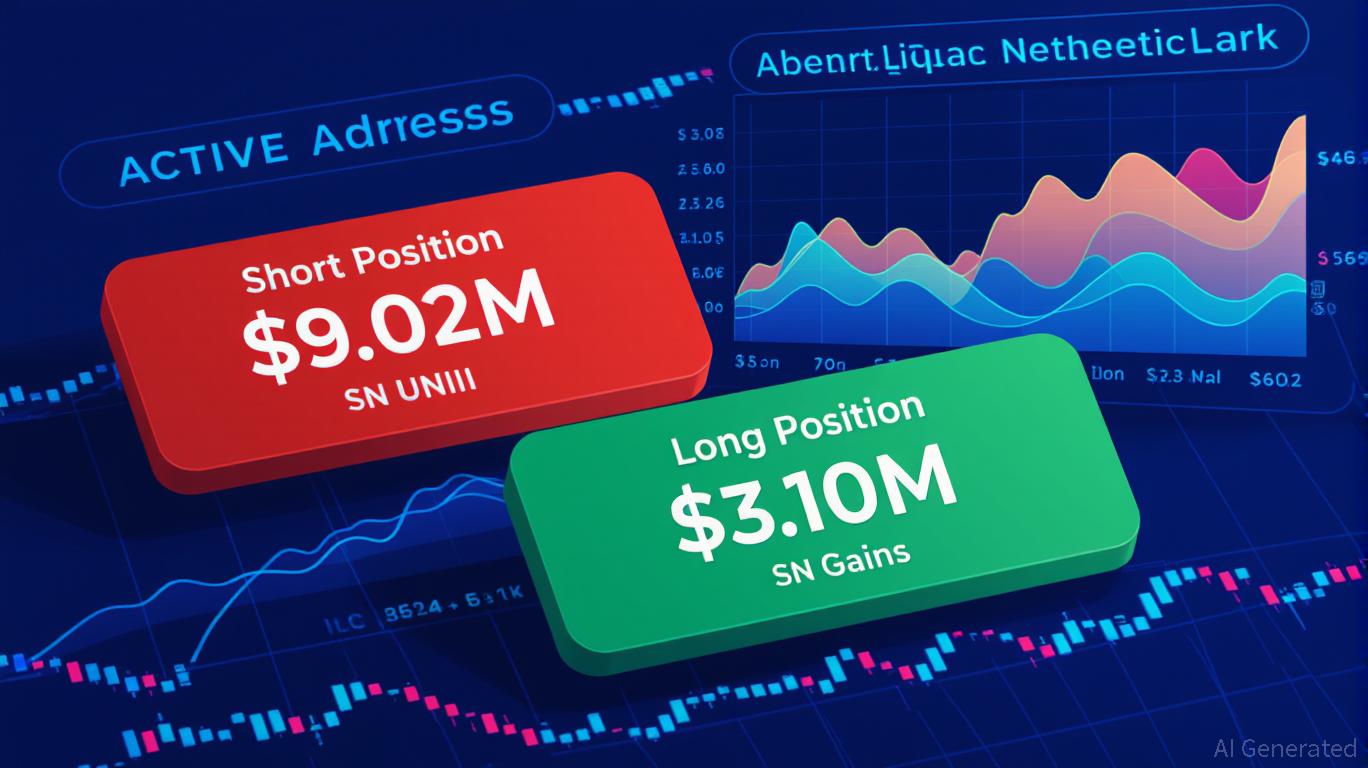What BTC, ETH, and XRP Whales Are Doing That Micro Wallets Don’t See
Santiment study links whale accumulation and micro wallet selling to crypto price surges.
Santiment’s latest study reveals a previously unexplored dynamic influencing XRP and other major cryptocurrencies. For the first time, the analytics firm visually maps the behavior of whales (large holders) and micro wallets, showing how their opposite actions can trigger significant price swings.
Understanding this relationship gives traders a unique lens into market movements and potential alpha opportunities.
XRP’s Hidden Whale Moves Drive Unexpected Ripple Price Surges
Santiment’s chart template tracks six major cryptocurrencies, including Bitcoin, Ethereum, XRP, Cardano, WETH, and Lido Staked ETH.
The analysis shows that when whales accumulate while micro wallets sell, prices often surge. Conversely, when whales reduce their holdings while smaller wallets buy, markets tend to dip.
Using XRP as the first example, despite underperforming in the second half of 2025, retail micro wallets continued to buy, driven by persistent FOMO.
Meanwhile, large stakeholders were selectively accumulating, creating short bursts of upward momentum. Nonetheless, the most profitable signals came when whales quietly added to their positions while micro wallets were selling XRP.
 XRP Whales vs Micro Wallets. Source:
Santiment
XRP Whales vs Micro Wallets. Source:
Santiment
This divergence highlights the importance of tracking both large and small holders. XRP’s retail wallets tend to follow the crowd, while whales hold their positions strategically, setting the stage for unexpected price moves.
Since XRP’s 7-year high above $3.62 in July, retail buying persisted even as whale accumulation drove temporary price spikes. This demonstrated the outsized influence of large holders on market swings.
Bitcoin, Ethereum, and Other Altcoins Reveal Similar Dynamics
Bitcoin provides a clearer example, showing major bull runs (green bars) occurred when whales were quietly adding to their positions while micro wallets were offloading. This created upward momentum.
In contrast, when whales were offloading and retail traders continued buying, prices generally declined.
 Bitcoin Whales vs Micro Wallets. Source:
Santiment
Bitcoin Whales vs Micro Wallets. Source:
Santiment
Ethereum followed a similar pattern. Between June and August 2025, strategic ETH accumulation by key stakeholders drove a nearly 87% price increase, even as smaller retail wallets were selling.
 Ethereum Whales vs Micro Wallets. Source:
Santiment
Ethereum Whales vs Micro Wallets. Source:
Santiment
Santiment’s study shows these opposing movements often foreshadow volatility more reliably than conventional indicators.
🐳🦐 In a breakthrough study, we take a look at the relationship between crypto's whales & micro wallets. For the first time, we visually reveal how key stakeholders' behavior correlates with price, especially when micro wallets are doing the opposite. 👇
— Santiment (@santimentfeed) November 11, 2025
Santiment’s insights extend to other major coins. Cardano’s whales have steadily accumulated during market dips, stabilizing ADA prices, while micro wallets chase smaller rallies.
Lido Staked ETH shows concentrated whale buying preceding price surges, even when retail wallets remain largely inactive. These patterns confirm that monitoring wallet tier behavior can provide actionable signals across multiple cryptocurrencies, not just BTC, ETH, and XRP.
Beyond the interplay between whales and micro wallets, Santiment suggests that algorithmically identifying optimal buying and selling windows could mark the next breakthrough in determining who drives prices. Such knowledge could enable traders to act faster on emerging trends.
Therefore, understanding these hidden forces could reveal the timing of the next major price moves and who really drives them.
Traders incorporating whale versus micro wallet activity into their strategies may gain a distinct edge in anticipating broader crypto market swings.
Disclaimer: The content of this article solely reflects the author's opinion and does not represent the platform in any capacity. This article is not intended to serve as a reference for making investment decisions.
You may also like
Hyperliquid (HYPE) Price Rally: Increased On-Chain Engagement and Institutional Interest Drive Expansion Prospects
- Hyperliquid's HYPE token surged 32% driven by whale trading and institutional adoption via HIP-3 framework. - Whale activity shows $9M UNI short vs. $3.1M long positions, highlighting platform's speculative role in volatile assets. - Institutional partnerships with RedStone and Felix, plus 21Shares' ETF application, signal growing market confidence. - TVL reached $5B with 73% decentralized trading share, but regulatory gaps and leadership changes pose sustainability risks.

The Growing Fascination with Hyperliquid: Is This the Next Evolution in Cryptocurrency Trading?
- Hyperliquid dominates decentralized trading in 2025 with $303B Q3 volume, 62% perpetual DEX open interest, and $5B TVL growth. - Ecosystem expansion includes HyperEVM (100+ protocols, $2B TVL) and USDH stablecoin (backed by BlackRock , $2.2M trading volume). - Institutional adoption grows via 21Shares' ETF application, but risks include regulatory scrutiny, 16-validator security vulnerabilities, and HYPE token volatility. - Competitors like Aster (near-$30B daily volume) challenge Hyperliquid's dominance

YFI drops 2.95% over 24 hours as market experiences turbulence
- Yearn.finance (YFI) fell 2.95% in 24 hours to $4,851 amid crypto market volatility. - Despite short-term gains (0.96% weekly, 2.52% monthly), YFI has dropped 39.62% over one year. - Traders analyze technical indicators and on-chain data to assess if the dip is a correction or deeper trend. - A backtest evaluates moving averages and volume signals to test strategies for mitigating losses during volatility.
JPMorgan and DBS Highlight Blockchain's Move Toward Real-World International Payments
- JPMorgan and DBS Bank launched a blockchain interoperability framework enabling real-time cross-chain tokenized deposit transfers for institutional clients. - The system connects JPMorgan's Kinexys platform with DBS's Token Services, addressing blockchain network incompatibility to streamline cross-border payments and trade finance. - The initiative aligns with global banks' push for tokenized deposit standards, supported by regulators like Singapore's MAS and potentially influencing future CBDC framewor
